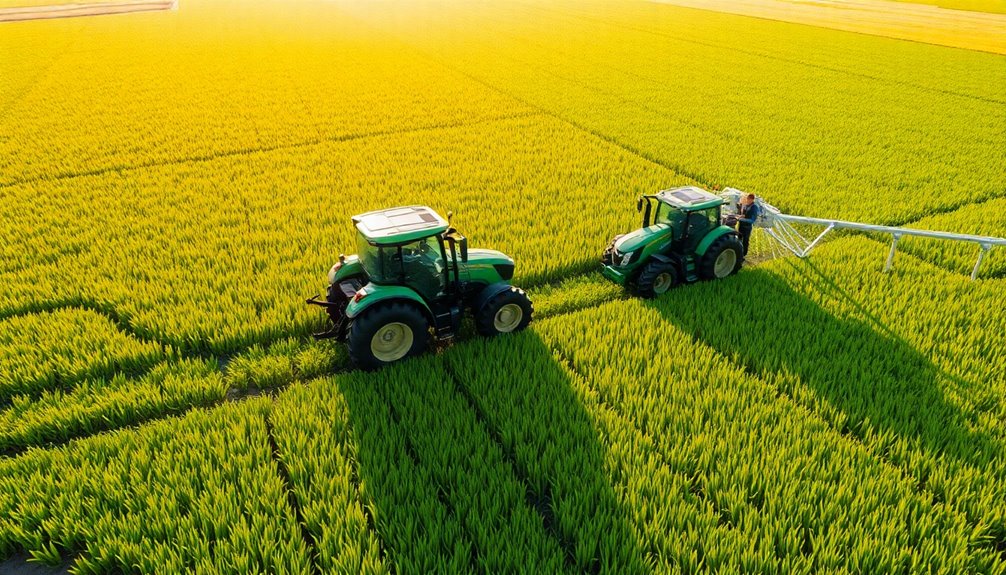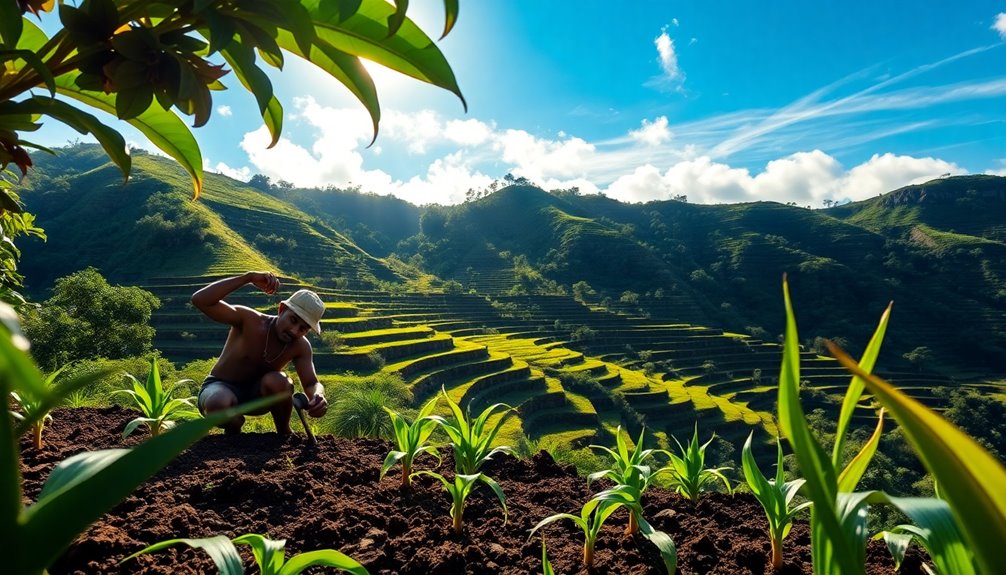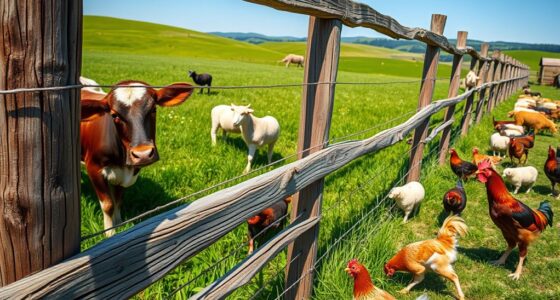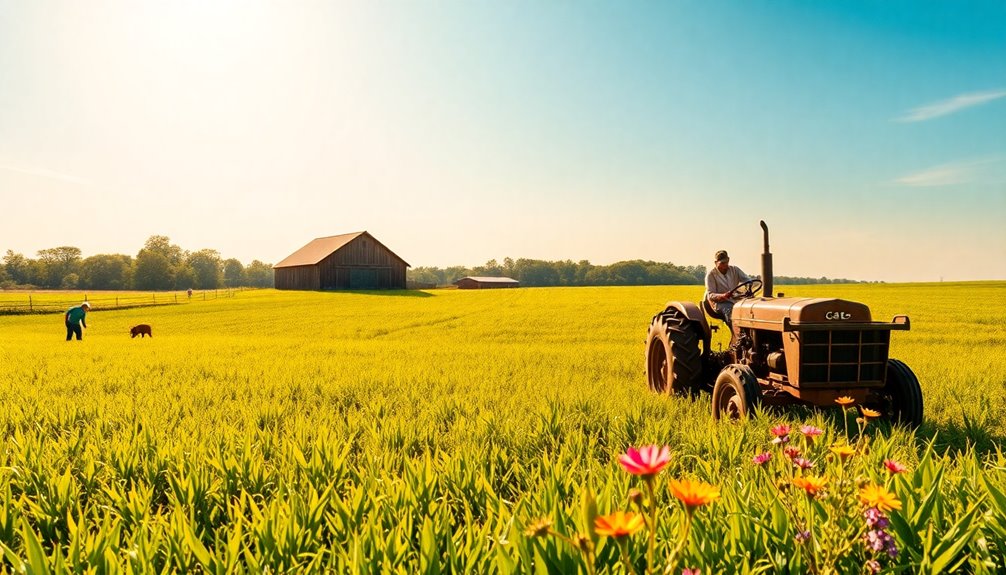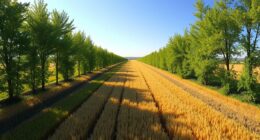Permaculture farming is a sustainable approach that combines agriculture with ecological principles. You can create self-sustaining systems that mimic natural ecosystems, promoting biodiversity and resilience. This method minimizes waste and maximizes resource reuse, leading to better food security over time. Permaculture practices improve soil health, conserve water, and reduce food waste through closed-loop systems. Engaging with your community can further enhance local food production and resilience. By embracing these solutions, you can contribute to a healthier environment and sustainable future. To uncover the many benefits and practical applications of permaculture, keep exploring the topic further!
Key Takeaways
- Permaculture farming is a sustainable land use practice that mimics natural ecosystems to create self-sustaining agricultural systems.
- It enhances biodiversity and resilience, minimizing waste and maximizing resource reuse for long-term ecological balance.
- Techniques like water conservation and soil carbon sequestration contribute to climate change mitigation and improved local food production.
- Community involvement through initiatives like gardens and educational programs supports food sovereignty and sustainable agriculture practices.
- Innovations like vertical farming and aquaponics, alongside technology integration, enhance efficiency in permaculture while addressing modern agricultural challenges.
Definition of Permaculture

At its core, permaculture is a sustainable approach to land use that blends ecological principles with agricultural practices.
It's about creating self-sustaining systems that mimic natural systems, promoting biodiversity and resilience. By incorporating permaculture principles, you can foster ecological sound practices that minimize waste and maximize resource reuse.
This approach not only supports sustainable agriculture but also enhances food security by ensuring that your land remains productive over time.
Permaculture goes beyond just farming; it embodies a holistic lifestyle that meets human needs while respecting the environment.
Key Principles of Permaculture
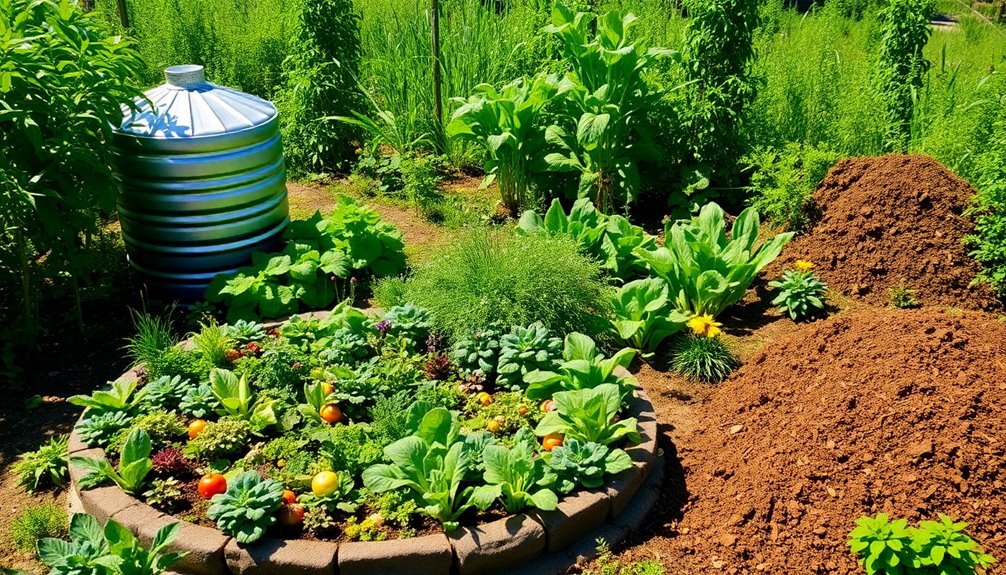
In permaculture, sustainability and diversity are essential for creating resilient ecosystems.
You'll find that regenerative practices not only enhance productivity but also maintain the health of the environment.
Sustainability and Diversity
Sustainability and diversity form the backbone of permaculture, guiding practices that aim for long-term ecological balance. By embracing ecological sustainability, you guarantee that your agricultural methods meet current needs while preserving resources for future generations.
A core tenet of permaculture principles is diversity; integrating various plant and animal species enhances ecosystem resilience and minimizes vulnerability to pests and diseases. You can also promote soil health through regenerative techniques, such as planting perennial crops that require less disturbance.
Furthermore, permaculture designs utilize closed-loop systems, turning waste from one component into a resource for another. This approach not only reduces resource consumption but also fosters community involvement, encouraging local knowledge sharing and sustainable food systems that benefit everyone.
Regenerative Practices Overview
Regenerative practices are essential to permaculture, focusing on restoring ecosystems and enhancing their natural functions. By emphasizing soil health, you create a rich foundation for your crops.
Techniques like composting and cover cropping not only nourish the soil but also improve its structure and water retention. Promoting biodiversity is another key principle; integrating various plant and animal species enhances resilience against pests and diseases.
Closed-loop systems play a significant role, converting waste into valuable resources—think livestock manure for fertilization. Additionally, using companion planting and polyculture helps reduce pest vulnerability while maximizing space.
With permaculture, you'll prioritize renewable resources and energy efficiency, fostering a sustainable environment that benefits both you and the planet.
Environmental Impact of Permaculture
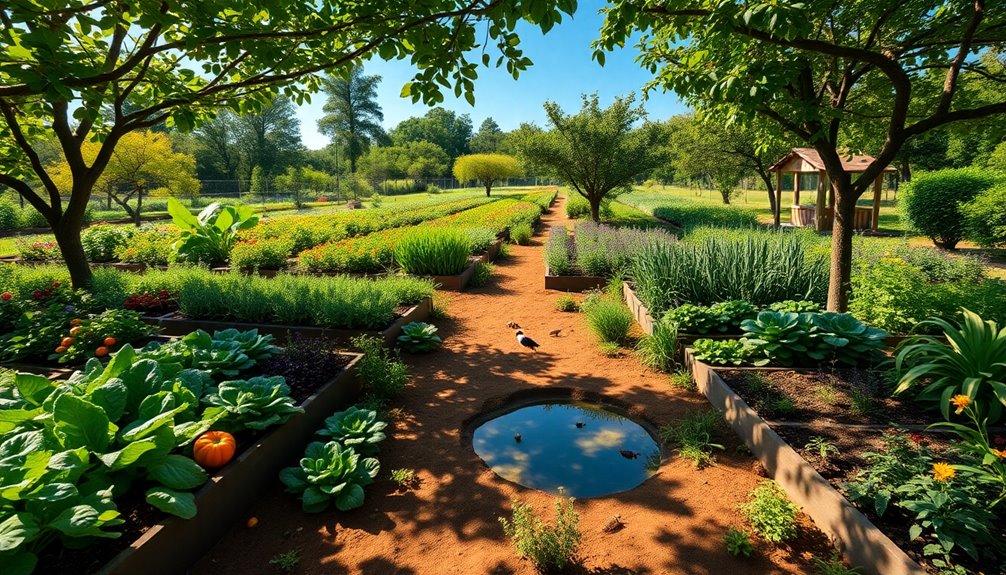
Permaculture farming stands out as a powerful approach to addressing environmental challenges. By embracing permaculture ethics, you can enhance environmental sustainability while mitigating issues like soil erosion and loss of biodiversity.
This approach promotes resilient ecosystems through diverse plant and animal species, ensuring healthier soil and reducing pest vulnerability.
Key impacts of permaculture include:
- Enhancing soil carbon sequestration, combating climate change
- Utilizing water conservation techniques to minimize runoff
- Creating closed-loop systems that reduce food waste
- Strengthening local food production to enhance community resilience
- Supporting biodiversity, which boosts ecosystem stability
Benefits of Permaculture Practices
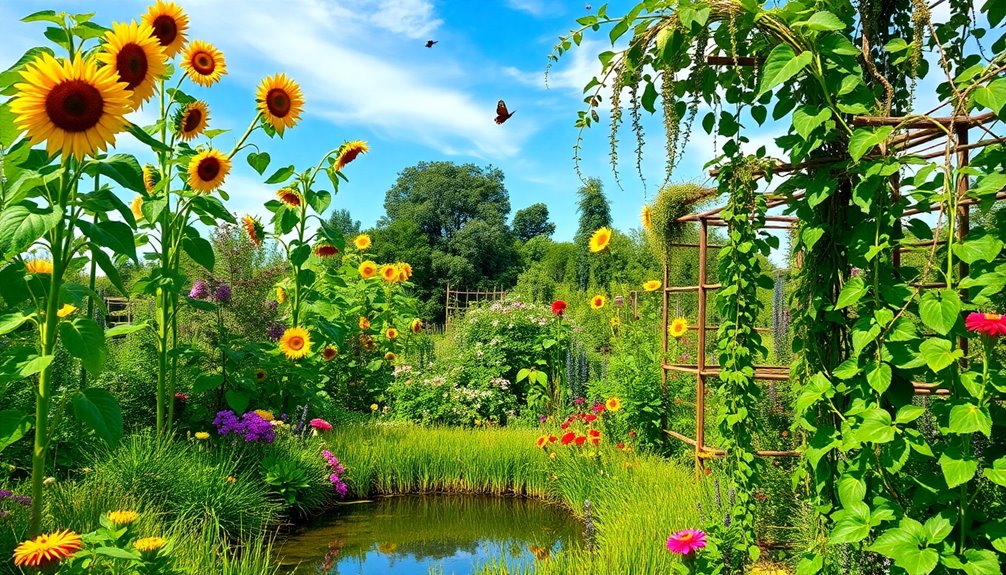
Embracing permaculture practices offers a wealth of benefits that can transform your farming experience.
By enhancing soil health through organic methods, you can increase soil organic matter by 1-2% annually, improving nutrient retention and reducing erosion.
Techniques like companion planting boost crop yields by up to 20% while minimizing pest issues through natural biodiversity.
Water conservation strategies, such as swales and rainwater harvesting, can cut your water usage by half compared to conventional agriculture.
Additionally, permaculture fosters diverse ecosystems, which can lead to a 30% increase in biodiversity on your land.
Supporting local food systems not only strengthens your local community but also reduces transportation emissions by 50-75%, considerably cutting the carbon footprint associated with food production without relying on chemical fertilizers.
Successful Permaculture Examples

Let's look at some successful permaculture examples that highlight community-based initiatives and innovative farming practices.
You'll find inspiring projects like Happy Food Farm in China and the IDEP Foundation in Bali, where local engagement and sustainable methods thrive.
These initiatives not only enhance food systems but also educate communities on ecological responsibility.
Community-Based Initiatives
Community-based initiatives have emerged as powerful examples of how permaculture can transform local environments and strengthen social ties.
These programs showcase effective permaculture practices that provide sustainable solutions while promoting education and community engagement. Here are some notable examples:
- Happy Food Farm in China integrates diverse crops and livestock, focusing on community education.
- The IDEP Foundation in Bali enhances resilience through sustainable development training.
- The Konga Institute in New Zealand fosters ecological education via workshops.
- The Permaculture Association of South Australia strengthens local ecosystems through community initiatives.
- An NGO in Ukraine tailors permaculture education to meet specific community needs.
These initiatives demonstrate how permaculture not only nurtures local ecosystems but also builds a sense of community and shared responsibility.
Innovative Farming Practices
Innovative farming practices in permaculture are paving the way for sustainable agriculture worldwide.
Take Happy Food Farm in Nanning, China, where permaculture design fosters a diverse ecosystem of vegetables, flowers, fish, and chickens while emphasizing community education on sustainable solutions.
Similarly, the IDEP Foundation in Bali trains local communities on ecological farming techniques, helping them adapt to climate change.
In New Zealand, the Konga Institute promotes biodiversity through workshops that teach sustainable living and permaculture methods.
The Permaculture Association of South Australia (PASA) champions practices that enhance local ecosystems, while an NGO in Ukraine tailors permaculture education to strengthen local food systems.
These examples highlight the transformative power of permaculture in creating resilient, sustainable communities.
Implementation Strategies for Permaculture
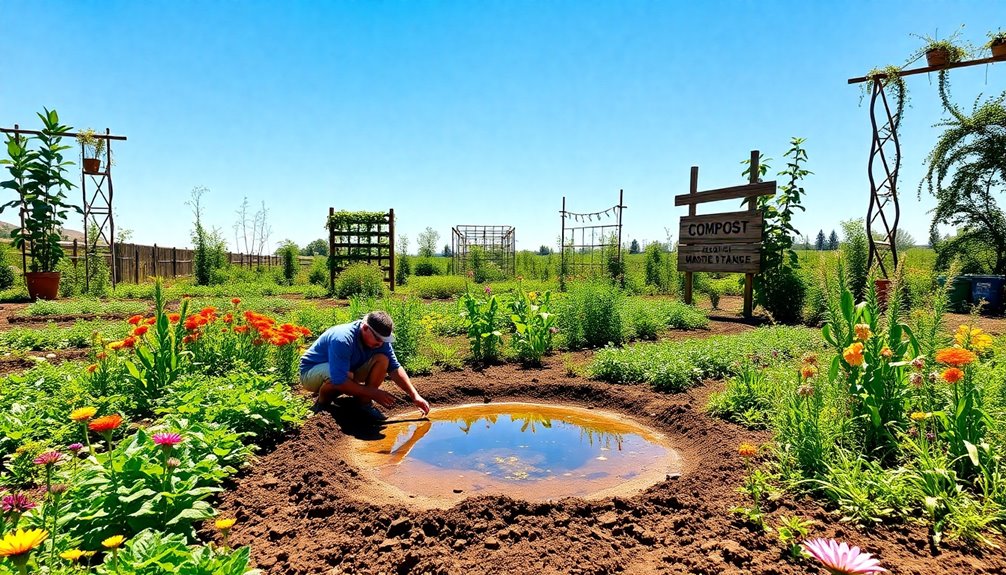
Implementing permaculture principles effectively requires a collaborative approach that brings together individuals, local organizations, and grassroots movements.
By engaging in community projects, you can enhance local food production and bolster environmental health.
Here are some strategies to contemplate:
- Participate in Permaculture Design Courses (PDC) to gain knowledge and hands-on experience.
- Start a community garden to promote sustainable practices and local food sources.
- Adopt mindful habits like composting and water conservation to reduce your environmental footprint.
- Collaborate with local organizations for support and resources in your sustainable initiatives.
- Encourage local farmers to adopt permaculture methods, strengthening the local economy.
- Consider incorporating wild edibles like those found in Minnesota and Michigan to diversify your community garden's offerings.
These actions not only empower you but also create a resilient community focused on sustainable living.
Community Involvement in Permaculture
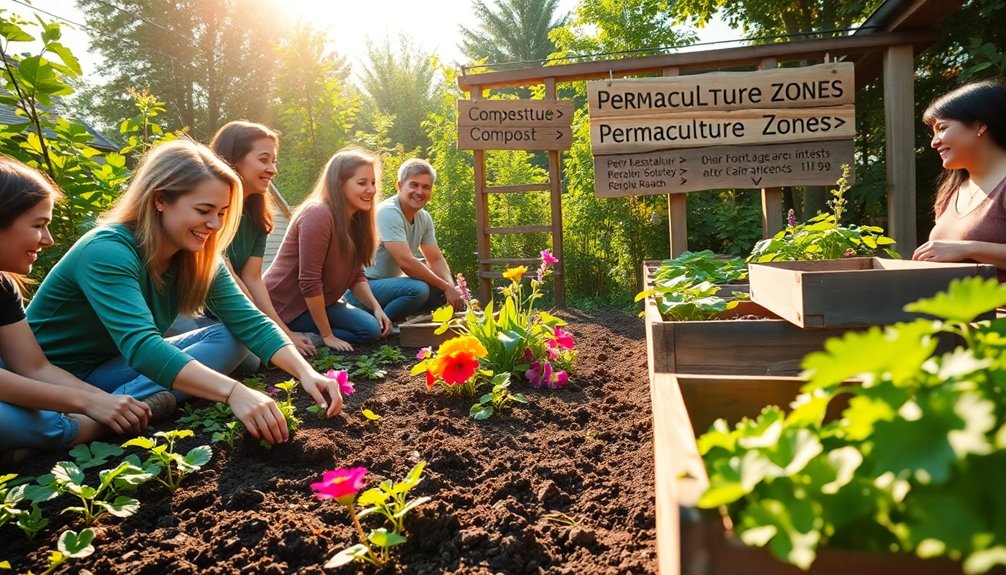
Engaging your community in permaculture can greatly enhance local food systems while building resilience against environmental challenges.
Through community involvement, you can participate in initiatives like community gardens and local farms that employ permaculture practices. These projects promote sustainable agriculture, food sovereignty, and accessibility for everyone.
Educational programs and workshops offered by organizations such as the Permaculture Institute of North America empower you and your neighbors with essential skills and knowledge for effective implementation.
Networking with local permaculture groups like the Permaculture Tigers fosters ongoing support, resource sharing, and collaboration among practitioners.
Challenges and Critiques of Permaculture
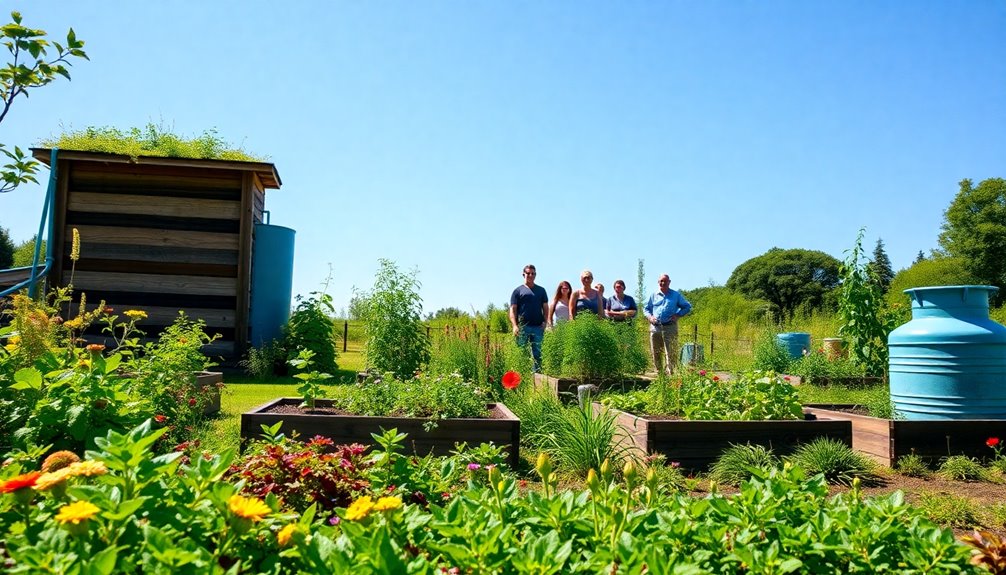
Permaculture isn't without its challenges and critiques, which can complicate its adoption among farmers and practitioners.
You might encounter several hurdles that impact its effectiveness and acceptance, including:
- High initial setup costs that deter changing farmers.
- Oversimplification of complex agricultural systems, potentially ignoring scientific methods.
- Limited market access for permaculture products, affecting economic viability.
- Cultural resistance from those attached to traditional farming practices.
- The need for continuous education and adaptation, which can be intimidating in fast-changing environments.
These challenges can create significant barriers, making it essential for you to carefully consider the implications of adopting permaculture practices in your farming journey.
Future of Permaculture Farming
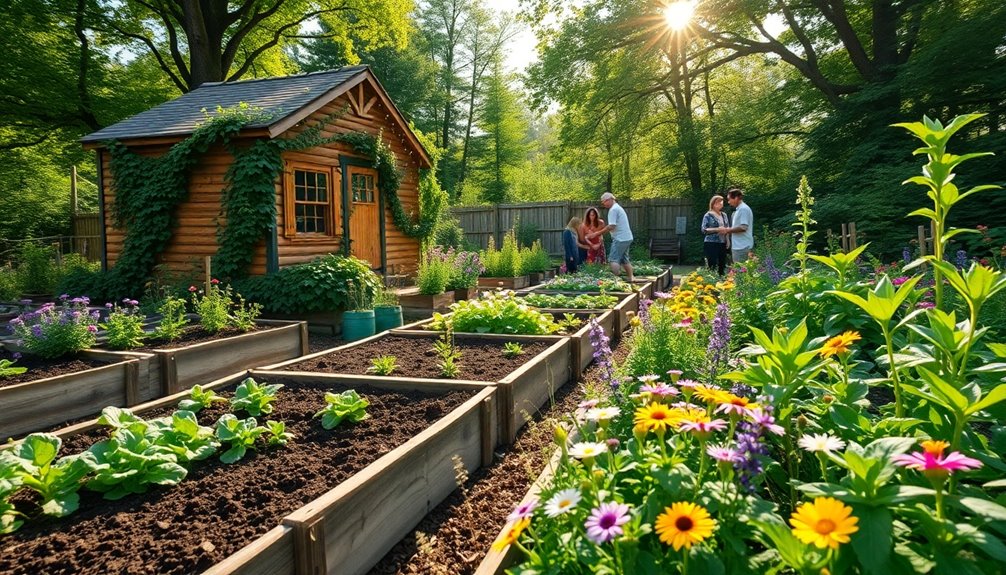
Despite the challenges and critiques surrounding permaculture, its future looks promising as more people recognize the importance of sustainable farming practices.
With around 1.5 billion individuals already engaged in sustainable agriculture, you can expect to see innovations like vertical farming and aquaponics enhancing food production efficiency.
These design principles minimize land use and resource consumption while addressing climate change impacts through strategies such as swales and rainwater harvesting.
Additionally, technology integration—like using drones to monitor crop health—will improve yield predictions and resource management.
Collaborative community projects and an increase in Permaculture Design Courses (PDC) globally are essential for spreading these principles and training new practitioners in growing food sustainably.
The future of permaculture is indeed bright and full of potential.
Frequently Asked Questions
What Is Permaculture Sustainable Farming?
Permaculture sustainable farming's all about creating a self-sustaining system that mimics nature.
You integrate crops and landscapes, using techniques like companion planting and mulching to improve soil health.
By prioritizing biodiversity, you not only enhance resilience but also help fight climate change.
This approach encourages local food production, cutting down on transportation emissions and boosting your community's economy.
Plus, it's perfect for small-scale operations, maximizing yields while restoring ecological balance.
Can Permaculture Replace Modern Agriculture?
When it comes to agriculture, you can't put all your eggs in one basket.
Permaculture can indeed replace modern agriculture, offering sustainable solutions that focus on ecological balance and self-sufficiency. By enhancing soil health and promoting biodiversity, it reduces reliance on chemicals and fossil fuels.
As you adopt practices like composting and no-till farming, you'll not only improve food security but also contribute to a healthier planet, making it a viable alternative.
What Is a Disadvantage of Permaculture?
One disadvantage of permaculture is the initial setup cost. You might find it prohibitively high, especially if you're shifting from conventional farming.
This change requires significant investment in infrastructure and education, which can feel overwhelming. Additionally, you'll face a steep learning curve as you adapt to new techniques.
Market access for your permaculture products may also be limited, making it hard to sell your goods and maintain a profitable business model.
What Problems Does Permaculture Solve?
Did you know that industrial agriculture can take up to 1,000 years to create just 3 centimeters of topsoil?
By adopting permaculture practices, you tackle soil degradation, enhance water retention, and promote biodiversity.
You'll reduce your reliance on harmful chemicals, lower greenhouse gas emissions, and support local food systems.
This approach not only fosters resilience in ecosystems but also empowers communities to engage in sustainable food practices, making a significant impact on modern agriculture.
Conclusion
Incorporating permaculture practices not only nurtures nature but also nurtures communities. By embracing eco-friendly ethics and sustainable strategies, you can cultivate a thriving, resilient environment. The promise of permaculture lies in its ability to transform traditional tactics into triumphs, fostering food security and environmental harmony. As you explore this innovative approach, remember that every small step contributes to a sustainable future. Let's champion change and cultivate a greener world together!


